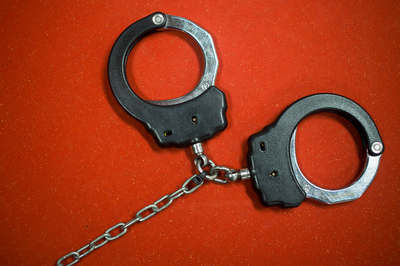DNA ‘Evidence’: Only Opinion, Not Science, And Definitely Not Proof Of Crime!
The article was published in Bloomberg Quint on August 20, 2018.
Though taking some steps in the right direction such as formalising the process for lab accreditation, the Bill ignores many potential cases of ‘harm’ that may arise out of the collection, databasing, and using DNA evidence for criminal and civil purposes.
DNA evidence is widely touted as the most accurate forensic tool, but what is not widely publicised is it is not infallible. From crime scene to database, it is extremely vulnerable to a number of different unknown variables and outcomes. These variables are only increasing as the technology becomes more precise – profiles can be developed from only a few cells and technology now exists that generates a profile in 90 minutes. Primary and secondary transfer, contamination, incomplete samples, too many mixed samples, and inaccurate or outdated methods of analysis and statistical methodologies that may be used, are all serious reasons as to why DNA evidence may paint an innocent person guilty.
Importantly, DNA itself is not static and predicting how it may have changed over time is virtually impossible.
Innocent, But Charged
In April 2018, WIRED carried a story of Lukis Anderson who was charged with the first-degree murder of Raveesh Kumra, a Silicon Valley investor after investigators found Anderson’s DNA on Kumra’s nails. Long story short – Anderson earlier that day had been intoxicated in public and had been attended by paramedics. The same paramedics handled Kumra’s body and inadvertently transferred Anderson’s DNA to Kumra’s body. The story quotes some sobering facts that research has found about DNA:
- Direct contact is not necessary for DNA to be transferred. In an experiment with a group of individuals sharing a bottle of juice, 50 percent had another’s DNA on their hand and ⅓rd of the glasses contained DNA from individuals that did not have direct contact with them.
- An average person sheds 50 million skin cells a day.
- Standing still our DNA can travel over a yard away and will be easily carried over miles on others clothing or hair, for example not very differently from pollen.
- In an experiment that tested public items, it was found that items can contain DNA from a half-dozen people.
- A friendly or inadvertent contact can transfer DNA to private regions or clothing.
- Different people shed detritus at different levels that contain DNA.
- One in five has some other person’s DNA under the fingernails on a continuous basis.

In another case, the police in Idaho, USA, used a public DNA database to run a familial DNA search – a technique used to identify suspects whose DNA is not recorded in a law enforcement database, but whose close relatives have had their genetic profiles cataloged, just as India's DNA Bill seeks to do. The partial match that resulted implicated Michael Usry, the son of the man whose DNA was in the public database. It took 33 days for Michael to be cleared of the crime. That an innocent man only spent 33 days under suspicion could be considered a positive outcome when compared to the case of Josiah Sutton who spent four years convicted of rape in prison due to misinterpretation of DNA samples by the Houston Police Department Crime Laboratory, which is among the largest public forensic centers in Texas. The Atlantic called this out as “The False Promise of DNA Testing – the forensic technique is becoming ever more common and ever less reliable”.
Presently, there is little confidence that such safeguards exist – prosecutors do not share any exculpatory evidence with the accused and India does not even follow the ‘fruit of a poisonous tree’ doctrine with respect to the admissibility of evidence and India has yet to develop a robust jurisprudence for evaluating scientific evidence.
The 2015 Law Commission Report cites four cases that speak to the role and reliance on expert opinion as evidence. Though these cases point to the importance of expert opinion they differ on the weight that should be given to the same. International best practice requires the submission of corroborating evidence, training law enforcement, and court officers, and ensuring that prosecution and defence have equal access to forensic evidence.
Consider India with a population of 1.3 billion people – 70 percent mostly residing in rural areas and less educated and a heavy migrant population in urban centres, an overwhelmed police force in nascent stages of forensic training, and an overburdened judiciary and no concrete laws to govern issues of the admissibility of forensic techniques.
In such circumstances, the question is not only how many criminals can be convicted but also how many innocents could be convicted.

A pair of standard issue handcuffs sits on a table. (Photographer: Jerome Favre/Bloomberg)
The DNA Bill seeks to establish DNA databanks at the regional and national level but how this will be operationalised is not quite clear. The Bill enables the DNA Regulatory Board to accredit DNA labs. Will databases be built from scratch? Will they begin by pulling in existing databases?
The question is not if the DNA samples match but how they came to match. The greater power that comes from the use of DNA databases requires greater responsibility in ensuring adequate information, process, training, and laws are in place for everyone – those who give DNA, collect DNA, store DNA, process DNA, present DNA, and eventually decide on the use of the DNA. As India matures in its use of DNA evidence for forensic purposes it is important that it keeps at the forefront what is necessary to ensure and protect the rights of the individual.
Elonnai Hickok Chief Operating Officer at The Centre for Internet and Society. Murali Neelakantan is an expert in healthcare laws, and the author of ‘DNA Testing as Evidence - A Judge’s Nightmare’ in the Journal of Law and Medicine.



